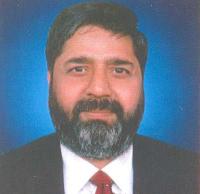

On Sunday – May 8, an RSS backed Jammu Kashmir People’s Forum, launched a vigorous campaign to “liberate“ Pakistan occupied Jammu and Kashmir from the occupation of Pakistan, as a sequel to the abrogation of Article 370 which is seen in the Indian nation as complete integration of the erstwhile state, now divided into two union territories of Ladakh and J&K, into the nation completely, physically, and psychologically. In the decades, this is for the first time that such a rally, attended by thousands of men, women, and children, was organized to reinforce the Indian claim on the territories under the occupation of Pakistan since 1947 after the tribesmen’s invasion of the princely state of Jammu and Kashmir. It was also in pursuance of the Parliament resolution of 1995 that had called for the vacation of the territories under the illegal control of Pakistan, a strong reiteration was made by Union Home Minister Amit Shah in the parliament on August 5, 2019, when the specials status and privileges of the erstwhile state were done away with.
Speakers at the rally drawn from right-wing organizations RSS, Vishwa Hindu Parishad, Bollywood, and also BJP spoke in terms of “Train to Mirpur”- Mirpur is one of the major towns on the other side of the Line of Control, or LoC, that divides Jammu and Kashmir between India and Pakistan. That meant that India, for certain, will be able to regain the territory and its trains would run there and flags will fly high over there. The occasion was given nationalistic colour with the huge processions of the people carrying the national tricolour singing patriotic songs.
Surinder Jain, Joint General Secretary of VHP told the audience that their wait is over. “After having made Article 370 a history we are on the march to liberate POJK.” These sentiments were echoed by other speakers, including J&K unit BJP president Ravinder Raina and Bollywood actor Mukesh Rishi. It was to trigger an anti-Pakistan mood and simultaneously credit the BJP leadership for having made the things possible for the moves to liberate the occupied territories of the erstwhile state of Jammu and Kashmir.
Pakistan, at this point in time, is in occupation of a total of 86,268 sq km of the area of the erstwhile state, it is 1942 sq. km short of what it had occupied in 1947-48. It has gifted 1942 sq. km to China under the Sino-Pakistan agreement of 1963. At present, Pakistan has 13, 297 sq km under its occupation in the territory it calls “Azad Jammu Kashmir”, and 72,971 sq. km of Gilgit-Baltistan, which it alternates calling Northern Areas and provisional province.
The history as narrated by the refugees who came from Pakistan occupied Jammu and Kashmir is a trail of the unending tales of brutalities of murders, rapes, and loot against the minorities – Hindus and Sikhs. They fled the areas which Pakistan calls parts of “ AJK”- Mirpur, Kotli, Poonch, and Muzaffarabad. They had no place to go, and they were made to settle in Jammu province. Then Prime Minister of Jammu and Kashmir – the state had the positions of Prime Minister and Sadr-e-Riyasat as head of the government and head of the state respectively until 1963. As all the displaced persons were either Hindus or Sikhs, Sheikh Abdullah was keen not to have them in the Valley. He had a dislike for the people of Jammu and the areas that now are under the control of Pakistan, because the people there never supported him, moreover he had a special hatred reserved for Dogras as he blamed the Dogra rule for all ills in the Valley.
In 2022- almost three years after the abrogation of Article 370, this theme has been picked up by the RSS backed forums to inject a narrative that POJK can be “liberated”, going by the theme that if the Central government can abolish the special status and bifurcate the state, it can get areas across the LoC liberated too, secondly, this is to garner the support of all the refugees of POJK now settled in Jammu and all those who believe that Jammu and Kashmir is incomplete without the POJK becoming part of it yet again – the restoration of pre-1947 position for the Assembly elections which, it is expected, would be held by the year-end.
Views expressed are personal
